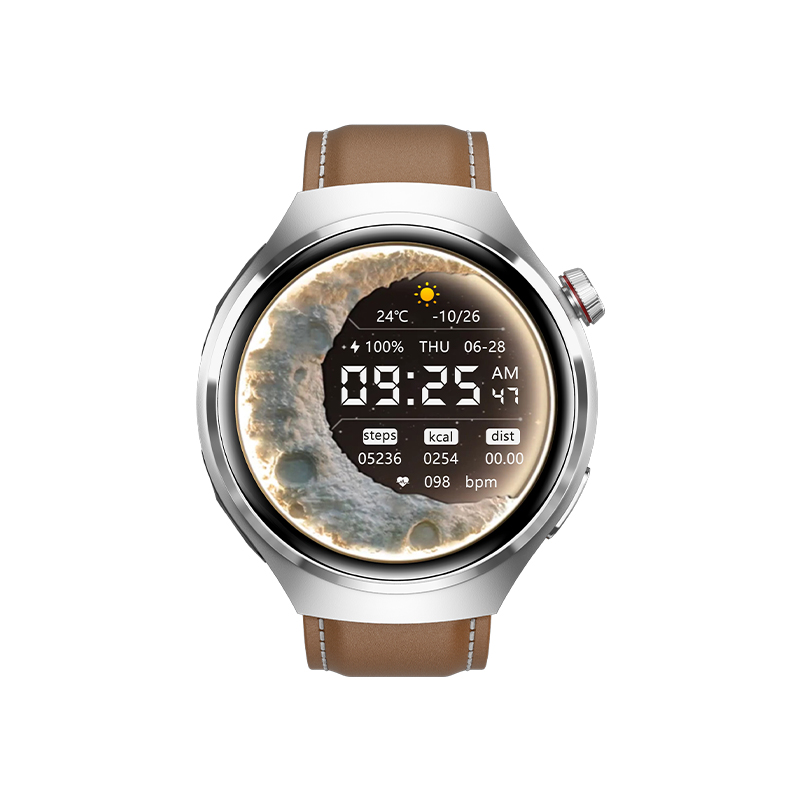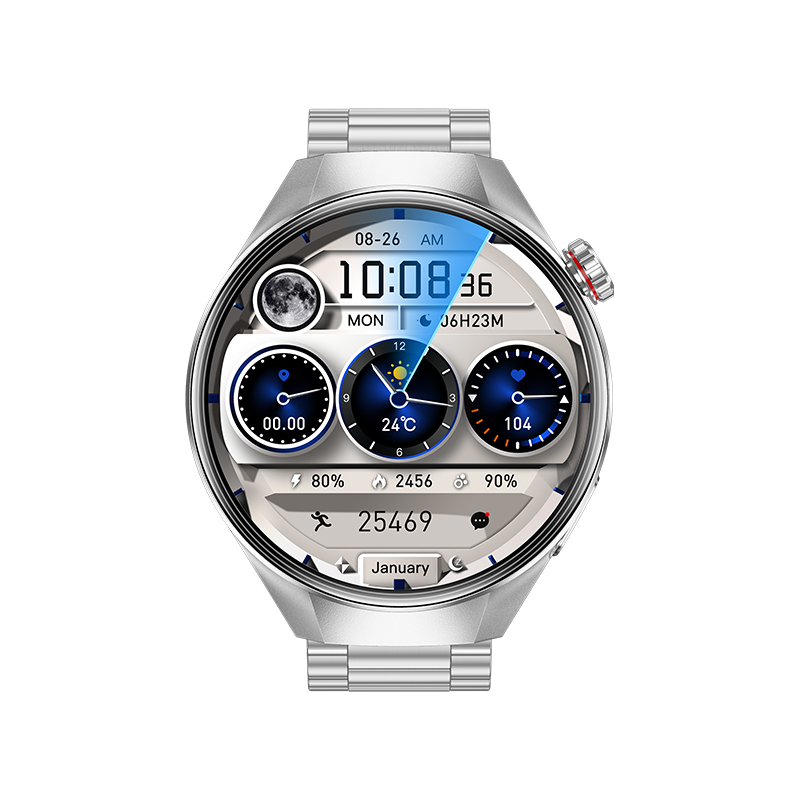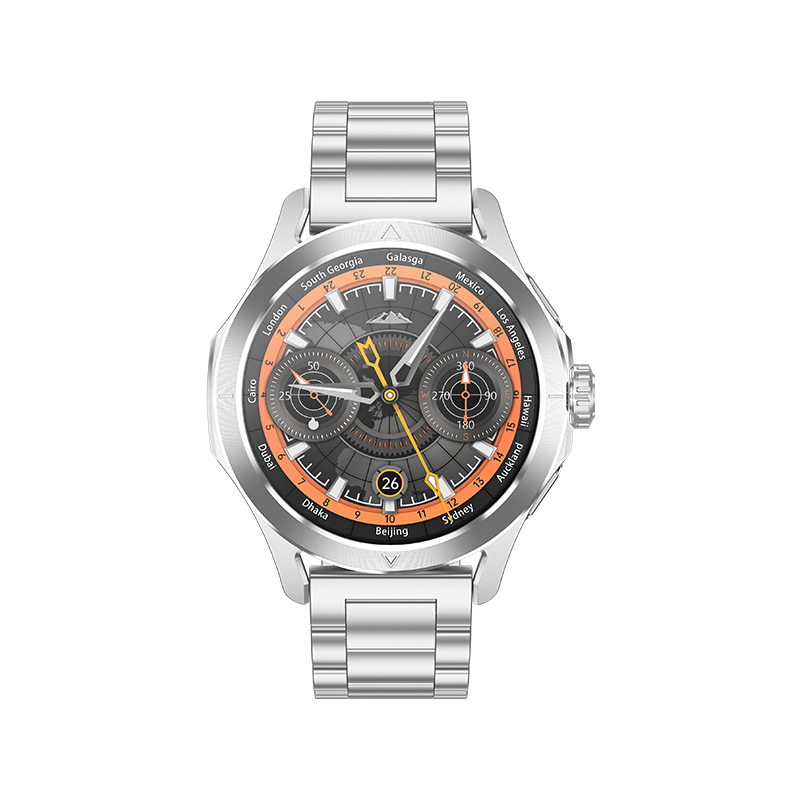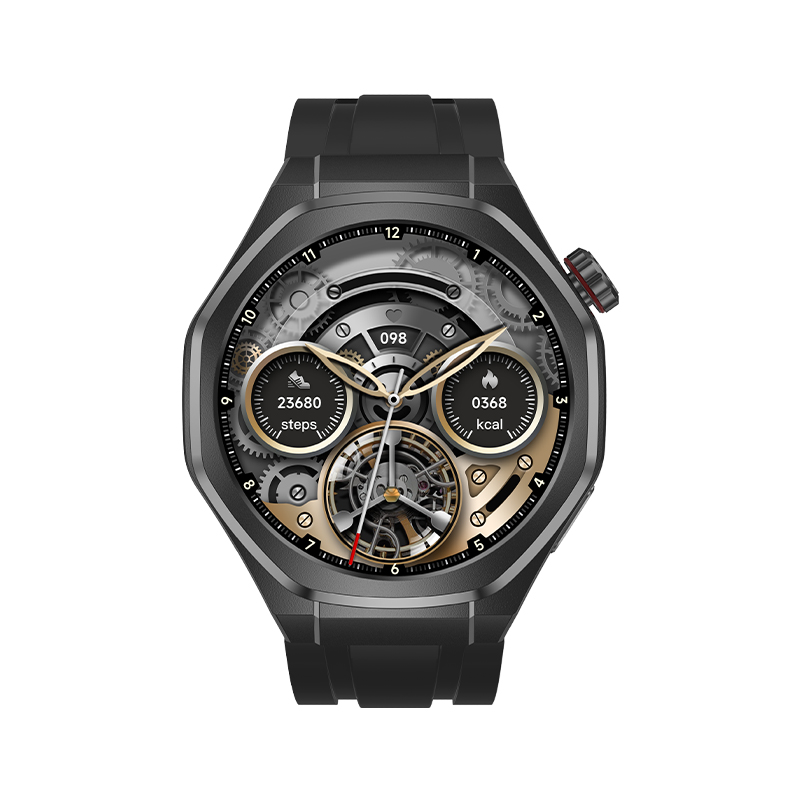What design optimizations enhance smart bracelet comfort?
Release Time : 2025-10-21
With the increasing popularity of smart wearable devices, smart bracelets have evolved from simple pedometers to integrated health monitoring, exercise assistance, and lifestyle reminders. However, no matter how powerful their functionality, users often quickly discard them if they're uncomfortable. Therefore, **wearing comfort** is a key factor in whether a smart bracelet can truly integrate into daily life and be worn all day. Modern smart bracelets, through a series of sophisticated design optimizations, continuously advance in lightness, fit, breathability, and user-friendly details, allowing users to virtually "forget they're there," truly achieving a harmonious symbiosis between technology and the body.
First and foremost, **lightweight design** is the foundation for enhanced comfort. The main structure of the bracelet is made of high-strength, lightweight engineering plastic or aluminum alloy, ensuring structural stability while minimizing overall weight. When worn on the wrist, there's virtually no noticeable weight or burden. Whether working for long hours, sleeping, or exercising vigorously, the weight never causes pressure or fatigue. The lightweight design also ensures the bracelet remains stable during swinging movements, preventing rubbing and discomfort.
Secondly, the choice of strap material is crucial. Most smart bracelets utilize soft, skin-friendly silicone straps. This material not only offers excellent elasticity, adapting easily to wrists of varying sizes, but also boasts excellent flexibility and tensile strength. The high-quality silicone is meticulously treated, resulting in a gentle touch that doesn't cause irritation or itching, ensuring a comfortable feel even during sweaty workouts. Some high-end models offer fabric, leather, or interchangeable strap options to meet diverse aesthetic preferences and enhance the personalized experience.
Ergonomic design is another key optimization. The bracelet's body and strap typically feature a streamlined design with smooth, rounded edges to prevent sharp edges from scratching the sensitive inner wrist area. The transition between the body and strap is smoothed to minimize stress concentration points and ensure the overall contour better conforms to the natural curvature of the wrist. This "seamless fit" design makes the band feel like a part of the body when worn, preventing marks or redness from prolonged contact.
To address the heat associated with all-day wear, many bands have also carefully considered breathability. Tiny air ducts or cutouts on the back of the band facilitate air circulation, accelerating sweat evaporation and reducing moisture accumulation. Sports bands may also feature bionic textures or moisture-wicking materials on the inside to further enhance the wearer's coolness. These small details significantly reduce the risk of skin irritation during extended use.
Adjustability is also crucial for enhancing comfort. Bands typically feature multiple adjustment holes, allowing users to choose the perfect size for their wrist, ensuring they're neither too loose (slipping) nor too tight (impairing circulation). Some newer bands use elastic braids or magnetic designs, allowing for seamless adjustment without drilling holes, making them more flexible and convenient to wear.
Finally, the layout of the screen and buttons also impacts the overall experience. The screen uses low-power always-on or wrist-raise sensing technology to avoid frequent button presses and minimize wearer posture. The touchscreen is sensitive and smooth, requiring no pressure, reducing wrist strain. The overall design strives for minimalism, eliminating unnecessary protrusions or complex structures, ensuring the bracelet stays snagged on clothing and doesn't interfere with typing or housework during daily activities.
Ultimately, the comfort of a smart bracelet isn't the result of a single factor; it's a comprehensive reflection of materials, structure, craftsmanship, and user experience insights. It defuses burdens with its lightness, caresses the skin with its softness, and seamlessly blends into the body. With every silent wear, it strives to be "present but not intrusive." This meticulous attention to detail embodies the true "people-centric" nature of smart wearables: technology no longer obtrusive but quietly integrated into our lives, becoming a gentle guardian of our health and habits.
First and foremost, **lightweight design** is the foundation for enhanced comfort. The main structure of the bracelet is made of high-strength, lightweight engineering plastic or aluminum alloy, ensuring structural stability while minimizing overall weight. When worn on the wrist, there's virtually no noticeable weight or burden. Whether working for long hours, sleeping, or exercising vigorously, the weight never causes pressure or fatigue. The lightweight design also ensures the bracelet remains stable during swinging movements, preventing rubbing and discomfort.
Secondly, the choice of strap material is crucial. Most smart bracelets utilize soft, skin-friendly silicone straps. This material not only offers excellent elasticity, adapting easily to wrists of varying sizes, but also boasts excellent flexibility and tensile strength. The high-quality silicone is meticulously treated, resulting in a gentle touch that doesn't cause irritation or itching, ensuring a comfortable feel even during sweaty workouts. Some high-end models offer fabric, leather, or interchangeable strap options to meet diverse aesthetic preferences and enhance the personalized experience.
Ergonomic design is another key optimization. The bracelet's body and strap typically feature a streamlined design with smooth, rounded edges to prevent sharp edges from scratching the sensitive inner wrist area. The transition between the body and strap is smoothed to minimize stress concentration points and ensure the overall contour better conforms to the natural curvature of the wrist. This "seamless fit" design makes the band feel like a part of the body when worn, preventing marks or redness from prolonged contact.
To address the heat associated with all-day wear, many bands have also carefully considered breathability. Tiny air ducts or cutouts on the back of the band facilitate air circulation, accelerating sweat evaporation and reducing moisture accumulation. Sports bands may also feature bionic textures or moisture-wicking materials on the inside to further enhance the wearer's coolness. These small details significantly reduce the risk of skin irritation during extended use.
Adjustability is also crucial for enhancing comfort. Bands typically feature multiple adjustment holes, allowing users to choose the perfect size for their wrist, ensuring they're neither too loose (slipping) nor too tight (impairing circulation). Some newer bands use elastic braids or magnetic designs, allowing for seamless adjustment without drilling holes, making them more flexible and convenient to wear.
Finally, the layout of the screen and buttons also impacts the overall experience. The screen uses low-power always-on or wrist-raise sensing technology to avoid frequent button presses and minimize wearer posture. The touchscreen is sensitive and smooth, requiring no pressure, reducing wrist strain. The overall design strives for minimalism, eliminating unnecessary protrusions or complex structures, ensuring the bracelet stays snagged on clothing and doesn't interfere with typing or housework during daily activities.
Ultimately, the comfort of a smart bracelet isn't the result of a single factor; it's a comprehensive reflection of materials, structure, craftsmanship, and user experience insights. It defuses burdens with its lightness, caresses the skin with its softness, and seamlessly blends into the body. With every silent wear, it strives to be "present but not intrusive." This meticulous attention to detail embodies the true "people-centric" nature of smart wearables: technology no longer obtrusive but quietly integrated into our lives, becoming a gentle guardian of our health and habits.







